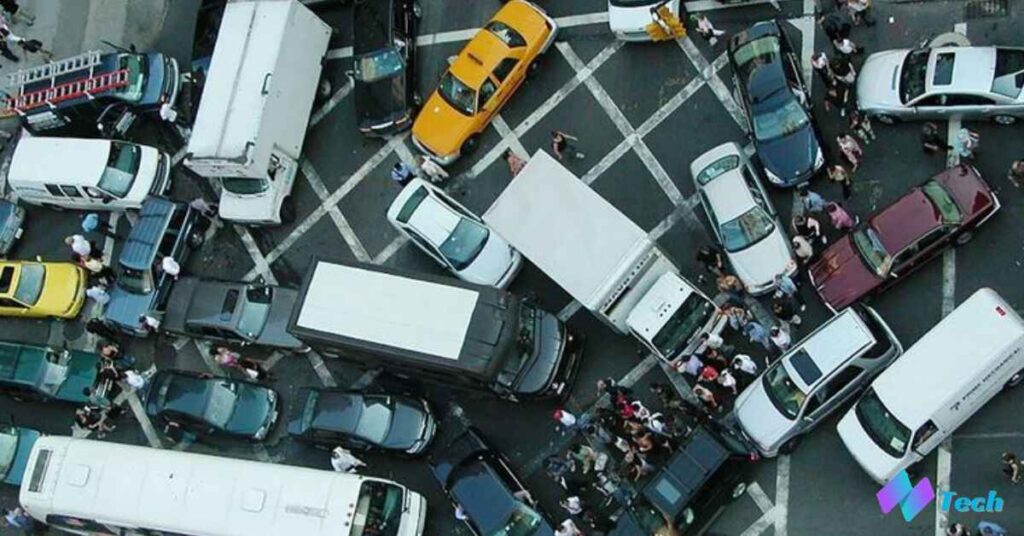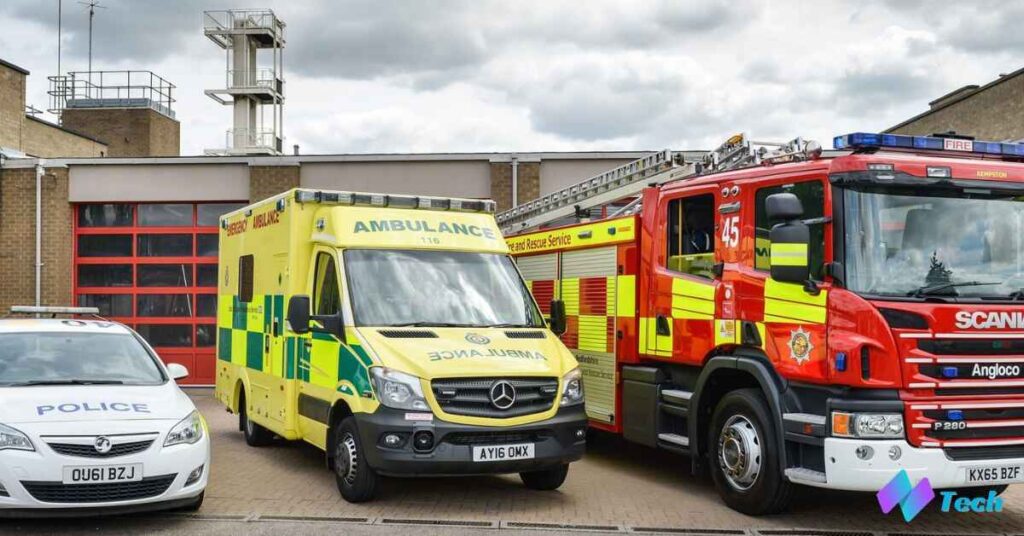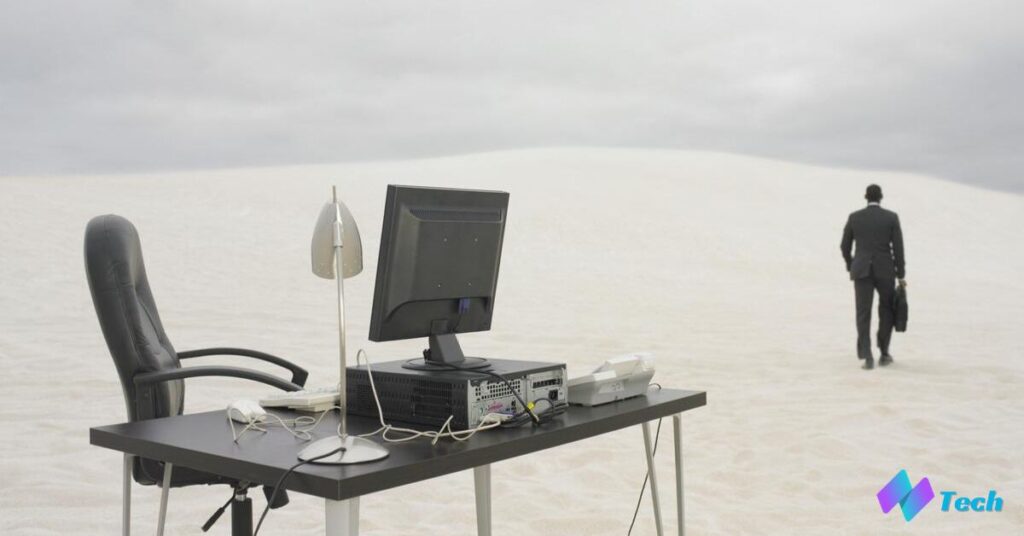A world without technology isn’t a distant dystopian scenario – it’s a reality that could happen at any moment through power outages, cyber attacks, or system failures. Modern life has become completely dependent on technology, from basic utilities to transportation, communication, and essential services.
The sudden disappearance of these systems would bring society to an immediate halt, disrupting everything from medical care to food distribution. Understanding how to navigate a technology-free environment is no longer optional – it’s a crucial survival skill.
This guide explores the challenges of life without technology and provides practical strategies for maintaining resilience in an increasingly connected world.
I’ll help craft detailed paragraphs for these headings using simple English and a humanized tone.
A Day Without Technology: First Hours of Chaos
A brief look at how the first hours unfold when all technology suddenly stops working.
The Morning Chaos: First Hours Without Technology
The first few hours without technology show us how dependent we are on our devices. Many people wake up late because their phone alarms don’t work. The streets are dark. Houses are silent. Coffee makers sit useless on kitchen counters. Parents can’t check the weather or traffic. Children can’t watch their morning cartoons. The simple act of getting ready for the day becomes a major challenge.
Immediate Personal Impacts
Most people start their day with technology. Without it, they face many problems. Electric toothbrushes don’t work. Hot water isn’t available for showers. Microwaves can’t heat breakfast. Even checking the time becomes difficult.
People who work from home can’t log in to their computers. Students can’t access their online classes. The morning routine that usually takes one hour now needs several hours.
Basic Utilities Breakdown
The loss of basic utilities creates serious problems. Water stops flowing because electric pumps don’t work. Homes become cold or hot because heating and cooling systems fail. Gas stations can’t pump fuel. Water treatment plants stop working. Sewage systems begin to fail. People can’t charge their devices. Refrigerators stop cooling food. These problems affect everyone, from single homes to entire cities.
Transportation Gridlock

Modern cars won’t start because they need computers to run. Traffic lights stop working at all intersections. Train systems shut down. Airports close because planes can’t fly without navigation systems. Electric cars become useless without charging stations.
Buses can’t run their regular routes. People must walk or use bicycles to get around. Cities become filled with stopped cars and confused travelers.
Essential Services Collapse
The breakdown of essential services affects everyone’s safety and well-being.
Healthcare System Paralysis
Hospitals face severe challenges without technology. Life support machines need backup power. Patient records become inaccessible. X-ray machines and MRI scanners don’t work. Surgeries must be canceled. Emergency rooms can’t process new patients quickly. Medicine storage systems fail. Blood banks can’t keep blood at the right temperature. Many treatments become impossible to perform.
Financial System Shutdown
Money becomes hard to access and use. ATMs stop working. Credit cards become useless pieces of plastic. Online banking disappears. Stock markets close. Business transactions stop. People can’t buy food or gas. Banks can’t process loans or deposits. The entire economy slows to a crawl. Only cash works, but most people don’t carry much cash anymore.
Emergency Services Challenges

Police, fire, and ambulance services struggle to help people. Emergency calls can’t get through. Police cars can’t access criminal databases. Fire trucks can’t get updated maps or building plans. Ambulances can’t contact hospitals.
Response times become very long. Emergency teams must use radio systems if they still work. Coordination between different services becomes very difficult.
Communication Vacuum
The loss of modern communication creates confusion and isolation.
Digital Communication Blackout
All digital communication stops working. Phones can’t make calls. Text messages don’t send. Emails don’t work. Video calls become impossible. Internet connections fail. Social media goes dark. News websites shut down. People can’t check weather updates or emergency alerts. The world becomes much larger and more disconnected.
Business Communication Breakdown
Companies can’t function normally. Office workers can’t access their files. Meetings get canceled. Employees can’t contact each other or their clients. Orders can’t be processed. Deliveries stop.
Factories shut down because their computers don’t work. International business deals pause. The global economy starts to suffer. Many businesses must close temporarily.
Social Connection Challenges
People feel cut off from friends and family. Parents can’t check on their children at school. Families can’t contact relatives in other cities. Friends can’t share updates or photos. Community events get canceled. Social groups can’t organize meetings.
People must talk face to face or not at all. The community must find new ways to stay connected and help each other. This detailed breakdown shows how deeply technology affects every part of our daily lives.
Each section reveals new challenges that emerge when technology stops working. The impacts range from minor inconveniences to serious safety concerns.
Read This Blog: The Ultimate Guide: Fix Your Peloton App Not Working (2024 Solutions)
Professional World Standstill
The modern workplace depends heavily on technology for daily operations. A complete technology shutdown would affect every industry and business sector.
Office Operations Halt
Most offices today run entirely on computers. Workers can’t access their files without computers. Basic tasks like sending messages or checking schedules become impossible. Paper records are rare now. Most companies store everything digitally. Workers can’t process payments or access customer information. Phones don’t work without power.
Printers and copiers stay silent. Even simple tasks like tracking work hours stop. Office buildings with electronic security systems become inaccessible. The impact hits productivity immediately. Companies lose money every hour systems stay down. Small businesses suffer the most because they often lack backup systems.
Remote Work Impossibility

Remote work ends instantly without technology. Video calls disappear. Team chats go silent. Cloud storage becomes unreachable. Workers can’t share files or update projects. Companies with global teams face the biggest challenge. Time zones create bigger gaps in communication.
Project deadlines slip. Client meetings cancel. The entire remote work structure falls apart. Businesses lose the flexibility of distributed teams. Everyone must return to physical offices – if they can reach them. Years of remote work progress vanish overnight.
Economic Activities Impact
Money stops moving in a technology blackout. Digital payments freeze. Credit cards don’t work. ATMs shut down. Online stores close instantly. Stock markets cease trading. Banks can’t process transactions. International trade slows to a crawl.
Digital contracts become inaccessible. Supply chains break down. The global economy faces immediate disruption. Local businesses must return to cash-only operations. Economic recovery takes significant time, even after systems return.
| Economic Impact Area | Immediate Effect | Duration of Impact |
| Digital Payments | Complete Shutdown | Immediate |
| Banking Services | Severe Disruption | Days to Weeks |
| Stock Markets | Trading Halt | Until Tech Restored |
| Supply Chains | Major Disruption | Weeks to Months |
| International Trade | Severe Slowdown | Months |
Educational System Disruption
Modern education relies on digital tools and internet access. A technology blackout creates immediate challenges for schools and students.
Digital Learning Breakdown
Schools lose access to their main teaching tools. Online courses stop completely. Students can’t access digital textbooks. Teachers lose their lesson plans stored in computers. School communications systems fail. Assignment submission becomes manual. Grading systems disappear. Schools must return to blackboards and paper.
Libraries lose access to digital catalogs. Research becomes much harder. Special education programs losing digital aids face unique challenges. The entire modern learning system needs rapid reorganization.
Research and Development Pause
Scientific research slows dramatically. Lab equipment stops working. Researchers lose access to digital data. Years of research become temporarily unreachable. Clinical trials face tracking issues. Data analysis becomes manual.
Complex calculations take longer. Research collaboration becomes difficult. Universities lose access to global research networks. Innovation in all fields slows down. Medical research faces severe delays. Technology development stops completely.
| Research Area | Impact Level | Recovery Time Estimate |
| Medical Research | Severe | 6-12 months |
| Data Analysis | Critical | 3-6 months |
| Lab Operations | High | 1-3 months |
| Academic Research | Severe | 6-12 months |
| Innovation Projects | Critical | 6-18 months |
Personal Life Adjustments
Life without technology forces major changes in how people spend their time and manage daily activities.
Entertainment Alternatives
The loss of digital entertainment creates a big shift in leisure activities. TVs go dark. Gaming consoles stop working. Streaming services disappear. People return to physical books and board games. Musical instruments become more popular.
Outdoor activities increase. Card games and puzzles fill evening hours. People spend more time talking face-to-face. Parks and public spaces see more visitors. Creative hobbies like drawing and crafting grow. Storytelling becomes entertainment again. Communities organize more local events.
Home Life Changes
Basic home tasks become more challenging without technology. Smart thermostats stop working. Security systems shut down. Automatic lighting fails. People must adjust to manual cooking methods. Food storage needs careful planning.
Cleaning takes more physical effort. Laundry becomes a manual task. Water usage needs monitoring. Home maintenance requires more attention. Daily schedules follow natural daylight. Evening activities adapt to candlelight. Simple tasks take more time and effort.
| Home Activity | Without Technology | Time Impact |
| Cooking | Manual Methods | 2-3x Longer |
| Cleaning | Physical Labor | 2x Longer |
| Laundry | Hand Washing | 4x Longer |
| Food Storage | Manual Monitoring | Daily Check |
| Climate Control | Manual Adjustment | Hourly Check |
Also Read: Max App Not Working: Your Ultimate 2024 Troubleshooting Guide
Survival Strategies
People must learn new ways to handle daily life without modern conveniences.
Essential Skills Revival
Old skills become important again. People learn to read maps. Basic math returns without calculators. Writing by hand improves. Fire-making becomes essential. Food preservation methods change. People learn basic repair skills.
Time management changes completely. Memory skills improve. Physical fitness becomes more important. Weather reading skills develop. Basic medical knowledge grows. Navigation without GPS becomes crucial.
Community Support Systems
Communities grow stronger without technology. Neighbors help each other more. Local markets become important. People share tools and resources. Community meetings increase. Local news spreads by word of mouth. Group activities become more common. Skills sharing grows important. Local trade systems develop. Emergency response becomes community-based. Food sharing systems emerge. Transportation sharing increases.
Future Implications
Understanding technology dependence helps prepare for possible disruptions.
Technology Dependence Assessment
Society faces big risks from technology loss. Critical systems need protection. Backup plans become essential. Communities need preparation. Business continuity requires planning. Healthcare systems need manual backups.
Education systems must maintain basic skills. Transportation needs non-digital options. Communication requires alternate methods. Financial systems need paper backups.
| Sector | Vulnerability Level | Backup Need |
| Healthcare | Critical | Immediate |
| Finance | High | 24 Hours |
| Education | Medium | Weekly |
| Transport | High | Daily |
| Communication | Critical | Immediate |
Infrastructure Enhancement Needs
Cities must prepare for technology loss. Power grids need manual controls. Water systems need backup plans. Emergency services need radio systems. Food distribution needs local backup. Fuel supplies need manual tracking. Communication needs physical infrastructure.
Transport systems need mechanical backups. Healthcare needs paper records. Government services need offline systems.
| Infrastructure | Current Status 2024 | Target 2025 |
| Power Grid | 70% Digital | 50% Manual Backup |
| Water Systems | 80% Digital | 60% Manual Option |
| Emergency Services | 90% Digital | 70% Radio Backup |
| Food Distribution | 85% Digital | 65% Local Backup |
| Healthcare Records | 95% Digital | 75% Paper Backup |
FAQ
Can we survive without technology in modern times?
Survival is possible but extremely challenging. Basic needs like food and shelter would remain available, but quality of life would decrease dramatically.
How long would it take for society to adapt to a technology blackout?
Initial chaos would last 2-3 weeks. Full adaptation to pre-digital systems would take 6-12 months.
What essential items should everyone have in case of a technology breakdown?
Manual tools, paper maps, battery-powered radio, first aid supplies, and non-perishable food are crucial. Cash and important documents in paper form are vital.
How can businesses prepare for technology failures?
Maintain paper record backups, train staff in manual operations, and keep basic non-electric equipment ready. Develop clear emergency protocols.
What skills are important to maintain in a non-digital world?
Basic math without calculators, map reading, handwriting, manual record-keeping, and basic repair skills are essential survival abilities.
Conclusion
Life without technology would force major changes in how we live, work, and connect. While survival is possible, it requires preparation and adaptation. The key to resilience lies in maintaining basic skills and building strong community networks.
Understanding our technology dependence helps us prepare for potential disruptions and appreciate the balance between digital convenience and basic life skills.



![Beacons.ai A Complete Guide to the AI-Powered Link in Bio Platform [2024 Review]](https://techplces.com/wp-content/uploads/2024/10/Beacons.ai-A-Complete-Guide-to-the-AI-Powered-Link-in-Bio-Platform-2024-Review-300x157.jpg)







![Beacons.ai A Complete Guide to the AI-Powered Link in Bio Platform [2024 Review]](https://techplces.com/wp-content/uploads/2024/10/Beacons.ai-A-Complete-Guide-to-the-AI-Powered-Link-in-Bio-Platform-2024-Review-150x150.jpg)